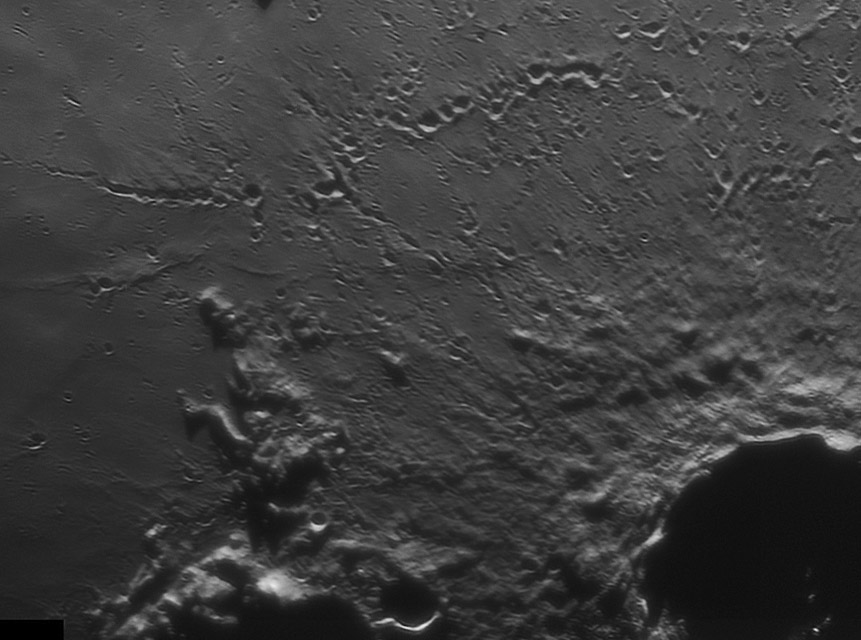Difference between revisions of "June 8, 2010"
| Line 1: | Line 1: | ||
__NOTOC__ | __NOTOC__ | ||
=A Radially Expanding Atmosphere?= | =A Radially Expanding Atmosphere?= | ||
| − | |||
<!-- ws:start:WikiTextHeadingRule:1:<h1> --> | <!-- ws:start:WikiTextHeadingRule:1:<h1> --> | ||
<!-- ws:start:WikiTextLocalImageRule:16:<img src="/file/view/LPOD-June8-10.jpg/147537769/LPOD-June8-10.jpg" alt="" title="" /> -->[[File:LPOD-June8-10.jpg|LPOD-June8-10.jpg]]<!-- ws:end:WikiTextLocalImageRule:16 --><br /> | <!-- ws:start:WikiTextLocalImageRule:16:<img src="/file/view/LPOD-June8-10.jpg/147537769/LPOD-June8-10.jpg" alt="" title="" /> -->[[File:LPOD-June8-10.jpg|LPOD-June8-10.jpg]]<!-- ws:end:WikiTextLocalImageRule:16 --><br /> | ||
| − | <em>north to left image by [mailto:nsmith10000@yahoo.co.uk Nick Smith] Oxford, UK</em><br /> | + | <em>north to left image by [mailto:nsmith10000@yahoo.co.uk" rel="nofollow Nick Smith] Oxford, UK</em><br /> |
<br /> | <br /> | ||
| − | Two days [ | + | Two days [/June+6%2C+2010 ago] a tiny, long and tapering crater chain was a topic of discussion because it was fresh but not radial to any obvious source crater. Nick's excellent [http://www.pbase.com/nicksmith/image/124900775" rel="nofollow mosaic] of Copernicus - trimmed unmercifully here - provides another example of a tapering crater chain that isn't radial to its obvious source crater, Copernicus. At top center is another chain of 8 or 9 larger craters that are clearly Copernican secondaries but also not radial to Copernicus. Perhaps there are good published explanations for these non-radial chains, but they do seem non-intuitive. The larger chain may have been formed by ejection of a mass of rock that was fractured into 8-9 pieces that traveled side by side. I don't know why that would have happened when nearly all other ejected masses tended to stretch out in a line along their trajectory. The tapered Copernican chain seems to have resulted from another fractured mass of ejecta, each piece of which had the same velocity but travelled different distances depending on its mass and size. But as Galileo demonstrated with two spheres of different masses, all the particles should move at the same speed and travel the same distance, unless they moved through an atmosphere and were sorted by aerodynamic drag. Or the gases carried the lighter particles further. Either of these interpretations would imply that the ejecta were embedded in gases, rather than simply traveling through the vacuum of space; a new idea?<br /> |
<br /> | <br /> | ||
| − | <em>[mailto:tychocrater@yahoo.com Chuck Wood]</em><br /> | + | <em>[mailto:tychocrater@yahoo.com" rel="nofollow Chuck Wood]</em><br /> |
<br /> | <br /> | ||
<strong>Technical Details</strong><br /> | <strong>Technical Details</strong><br /> | ||
| Line 17: | Line 16: | ||
<br /> | <br /> | ||
<hr /> | <hr /> | ||
| − | <div>You can support LPOD when you buy any book from Amazon thru [http://www.lpod.org/?page_id=591 LPOD!]<br /> | + | <div>You can support LPOD when you buy any book from Amazon thru [http://www.lpod.org/?page_id=591" rel="nofollow LPOD!]<br /> |
</div> | </div> | ||
| − | |||
---- | ---- | ||
===COMMENTS?=== | ===COMMENTS?=== | ||
Click on this icon [[image:PostIcon.jpg]] at the upper right to post a comment. | Click on this icon [[image:PostIcon.jpg]] at the upper right to post a comment. | ||
Revision as of 19:23, 4 January 2015
A Radially Expanding Atmosphere?

north to left image by " rel="nofollow Nick Smith Oxford, UK
Two days [/June+6%2C+2010 ago] a tiny, long and tapering crater chain was a topic of discussion because it was fresh but not radial to any obvious source crater. Nick's excellent " rel="nofollow mosaic of Copernicus - trimmed unmercifully here - provides another example of a tapering crater chain that isn't radial to its obvious source crater, Copernicus. At top center is another chain of 8 or 9 larger craters that are clearly Copernican secondaries but also not radial to Copernicus. Perhaps there are good published explanations for these non-radial chains, but they do seem non-intuitive. The larger chain may have been formed by ejection of a mass of rock that was fractured into 8-9 pieces that traveled side by side. I don't know why that would have happened when nearly all other ejected masses tended to stretch out in a line along their trajectory. The tapered Copernican chain seems to have resulted from another fractured mass of ejecta, each piece of which had the same velocity but travelled different distances depending on its mass and size. But as Galileo demonstrated with two spheres of different masses, all the particles should move at the same speed and travel the same distance, unless they moved through an atmosphere and were sorted by aerodynamic drag. Or the gases carried the lighter particles further. Either of these interpretations would imply that the ejecta were embedded in gases, rather than simply traveling through the vacuum of space; a new idea?
" rel="nofollow Chuck Wood
Technical Details
May 22, 2010, ~ 20.40 UT in twilight. C14 + 1.8x Televue barlow + red filter + Lumenera Infinity 2-1M.
Related Links
Rükl plates 20 and 32
COMMENTS?
Click on this icon File:PostIcon.jpg at the upper right to post a comment.



